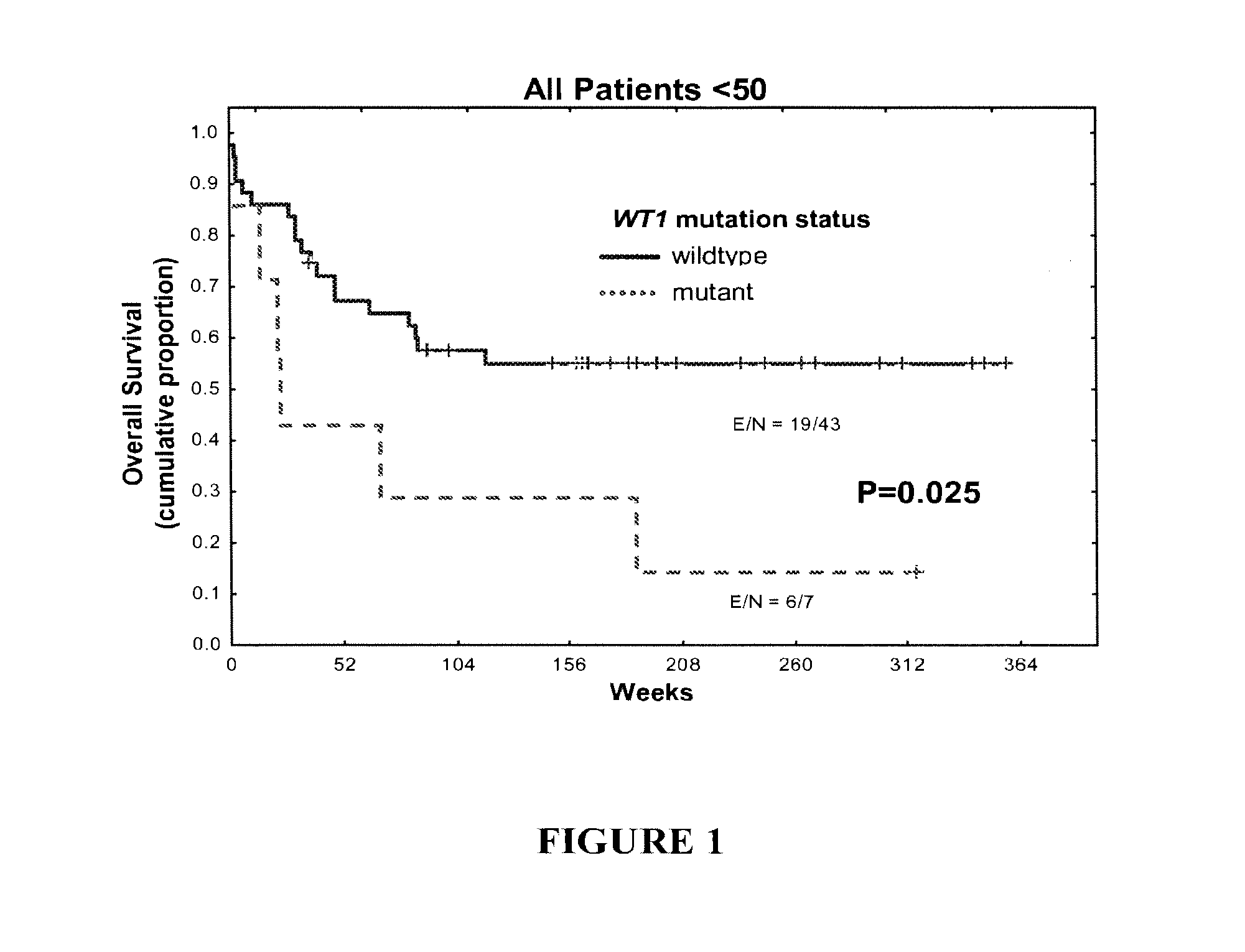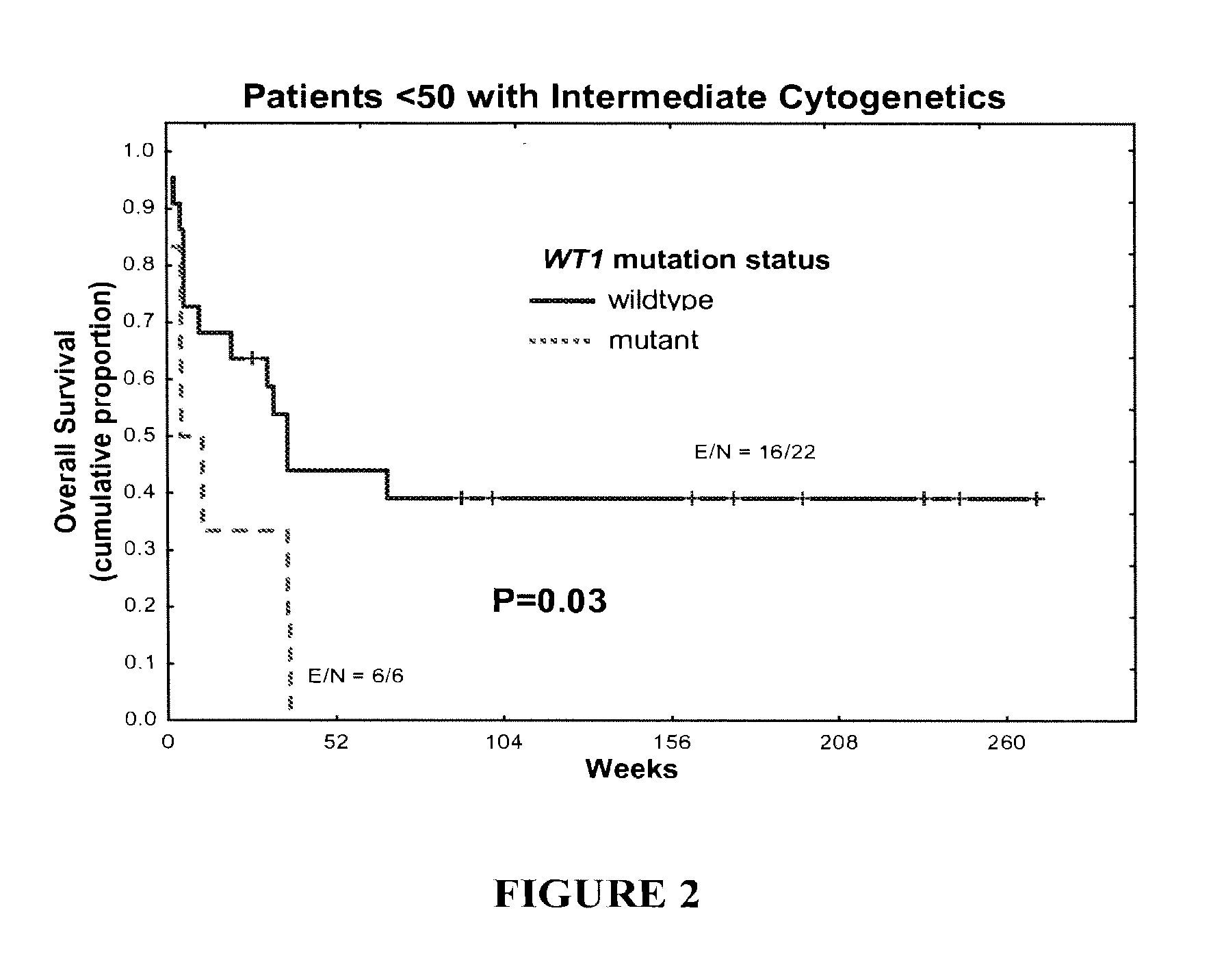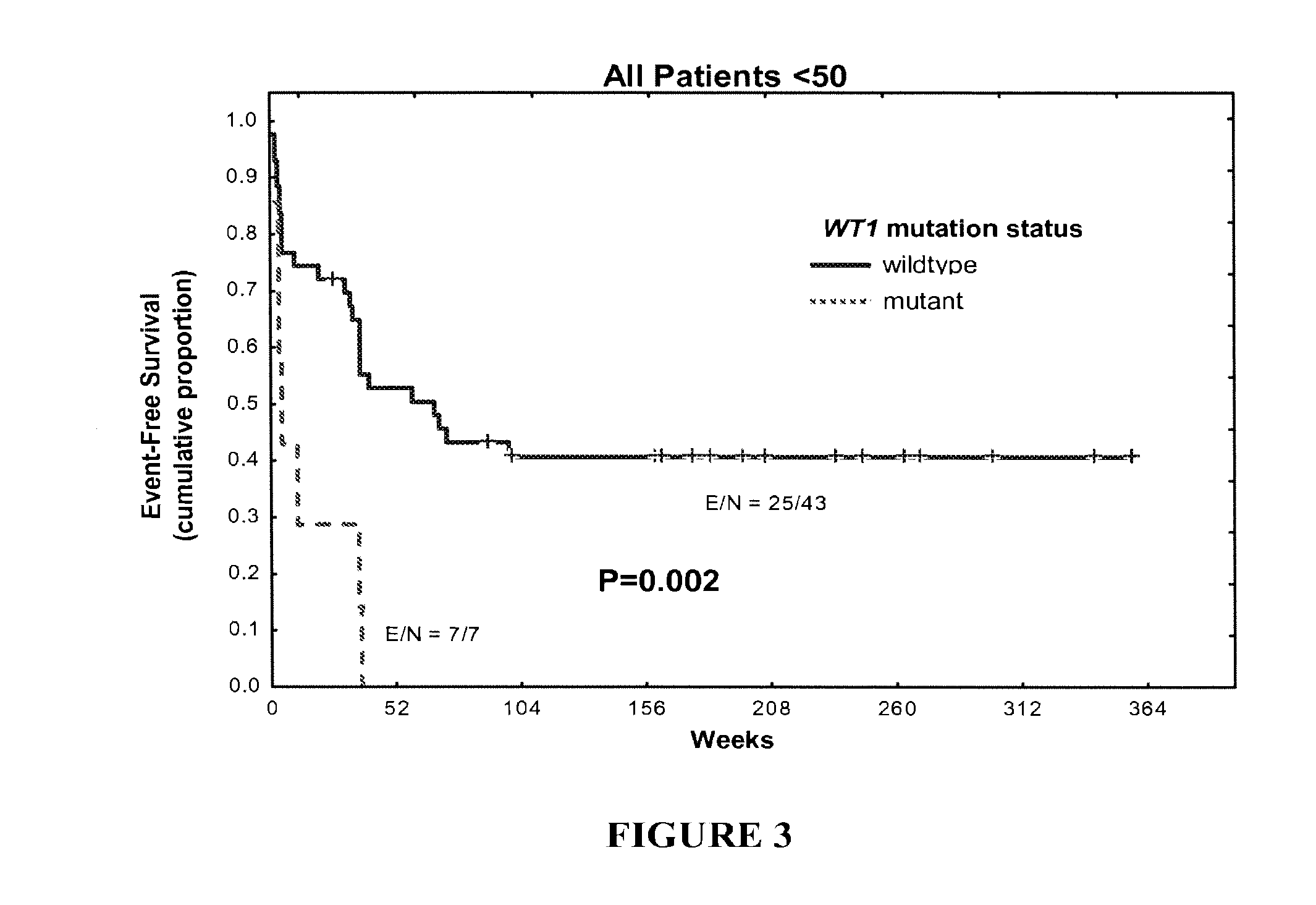WT1 mutations for prognosis of myeloproliferative disorders
a technology of myeloproliferative disorders and mutations, applied in the field of cancer diagnosis, can solve the problems of repeated serious infections, death, and uncomfortable symptoms, and achieve the effect of preventing myeloproliferative disease and increasing the likelihood of being afflicted
- Summary
- Abstract
- Description
- Claims
- Application Information
AI Technical Summary
Benefits of technology
Problems solved by technology
Method used
Image
Examples
example 1
[0076]WT1 SNP Polymorphism in Patients with Adult Acute Lymphoblastic Leukemia
[0077]Peripheral blood samples and bone marrow samples were collected in EDTA-containing tubes (Becton Dickinson, NJ) from 174 newly diagnosed AML patients. Blood or bone marrow cells were separated from plasma by differential centrifugation using Puregene® RBC lysis solution (Gentra System, MN, USA). The cell pellet was washed with phosphate-buffered saline. Both plasma and cell samples were cryopreserved at −80° C. for future use.
WT1 Mutation Analysis
[0078]WT1 mutations in exons 7 and 9 from patient samples were detected by sequencing and fragment length analysis. The findings were correlated with outcome and other laboratory findings.
[0079]WT1 mutations (non-sense mutations, duplications, insertions, and deletions) were detected in 14% of patients younger than 50 years of age (n =50) and in 4% of patients older than 70 (n=124). WT1 mutations correlated with higher white cell count (P=0....
example 2
[0082]WT1 Exon 7 SNP and Exon 9 Polymorphism Detection using PCR and Sequencing
Materials and Methods
[0083]Peripheral blood and bone marrow samples were collected from a total of 343 patients using the methods described in Example 1 above. Within this group, 93 patients were known to have or suspected of having AML and 250 patient had no known diagnosis of AML. Genomic DNA from peripheral blood cell or bone marrow samples was extracted using Qiagen BioRobot EZ1. Nucleic acid from blood plasma samples was extracted using the NucliSens extraction kit.
[0084]WT1 exon 7 SNPs and exon 9 polymorphisms were assessed by amplifying in two separate PCR reactions using a primer pair for exon 7 (WT1-7F and WT1-7R) and a primer pair for exon 9 (WT1-9F and WT1-9R). Each of the primers has an M13 sequencing tag on its 5′ end (noted in lowercase) to allow for sequencing verification after amplification. WT1-7F (SEQ ID NO: 9), WT1 -7R (SEQ ID NO: 10), WT1 -9F (SEQ ID NO: 11), and WT1 -9R (SEQ ID NO: 1...
example 3
[0090]WT1 Exon 7 Mutant Detection using Fragment Analysis
Materials and Methods
[0091]Peripheral blood and bone marrow samples were collected from the 343 patients of Example 2, using the procedure as described in Example 1 above. Genomic DNA from patient samples was extracted as described in Example 2.
[0092]PCR using labeled primer pair WT1 -7F and WT1-7R were used to amplify and heterozygous mutations to exon 7 of WT1. WT1-7F has an M13 sequencing tag on its 5′ end (noted in lowercase) to allow for sequencing verification after fragment analysis. WT1-7R was labeled with 6FAM fluorescent label at its 5′ end. WT1 -7F is provided below as SEQ ID NO: 15; WT1-7R is provided below as SEQ ID NO: 16.
SEQ ID NO: 15tgtaaaacgacggccagtTCTCCCTCAAGACCTACGTGASEQ ID NO: 16GTGTGAGAGCCTGGAAAAGG
[0093]Master mix containing enzymes, buffers, primers and dNTPs was prepared according to Table 3 of Example 2.
[0094]DNA template from each sample was added to the master mix and the reaction mixture was amplifi...
PUM
| Property | Measurement | Unit |
|---|---|---|
| time period | aaaaa | aaaaa |
| time | aaaaa | aaaaa |
| survival time | aaaaa | aaaaa |
Abstract
Description
Claims
Application Information
 Login to View More
Login to View More - R&D
- Intellectual Property
- Life Sciences
- Materials
- Tech Scout
- Unparalleled Data Quality
- Higher Quality Content
- 60% Fewer Hallucinations
Browse by: Latest US Patents, China's latest patents, Technical Efficacy Thesaurus, Application Domain, Technology Topic, Popular Technical Reports.
© 2025 PatSnap. All rights reserved.Legal|Privacy policy|Modern Slavery Act Transparency Statement|Sitemap|About US| Contact US: help@patsnap.com



